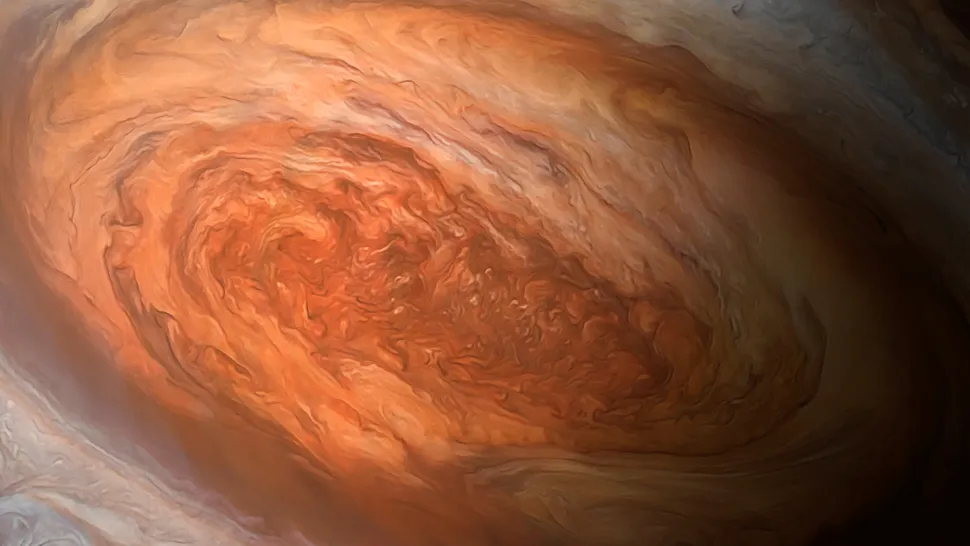NASA's Hubble Space Telescope has unveiled a striking new image featuring Jupiter in a mesmerizing display of ultraviolet light. This image was released in celebration of Jupiter reaching opposition, a celestial event when the planet and the Sun are positioned on opposite sides of the sky.
In this breathtaking ultraviolet image, the gas giant planet Jupiter is portrayed in vivid detail, with a prominent feature stealing the spotlight: the renowned "Great Red Spot." Although this colossal storm typically appears red to the human eye, in the ultraviolet spectrum, it takes on a darker hue. This intriguing transformation occurs because high-altitude haze particles in Jupiter's atmosphere absorb light at these specific wavelengths. Notably, the reddish, undulating polar hazes exhibit a slightly lower level of light absorption, which may be attributed to variations in particle size, composition, or altitude.
The data used to produce this ultraviolet image stems from a Hubble research initiative aimed at investigating Jupiter's enigmatic superstorm system. The research team intends to employ Hubble data to chart the 3D structures of deep water clouds within Jupiter's atmosphere.
What is the red spot on the Jupiter?
According to NASA, The Great Red Spot, a massive storm on Jupiter, has been a constant presence for over a century. Situated in the Southern Hemisphere of the planet, it stands as the largest storm in our entire solar system. NASA suggests that this colossal red spot might have been around for even longer than 150 years.
Picture Courtesy: Space.com
Hubble has a rich history of observing the outer planets, with contributions ranging from studying Jupiter's storms to capturing the dramatic impacts of Comet Shoemaker-Levy 9. Hubble's longevity and unique vantage point in space provide astronomers with invaluable insights into the ever-evolving dynamics of this gas giant.
Hubble's ultraviolet observational capabilities enable astronomers to delve into the realms of short, high-energy wavelengths of light beyond the human eye's perception. Ultraviolet light unveils a multitude of cosmic phenomena, from the emissions of the hottest, youngest stars in nearby galaxies to the analysis of interstellar material's composition, density, and temperature, along with the evolution of galaxies.
According to NASA's official website, the remarkable image is presented in false colour, as the human eye is unable to directly perceive ultraviolet light.
Ⓒ Copyright 2023. All Rights Reserved Powered by Vygr Media.









